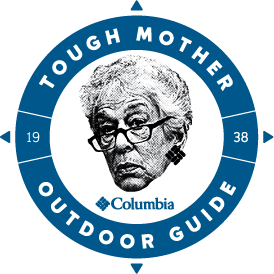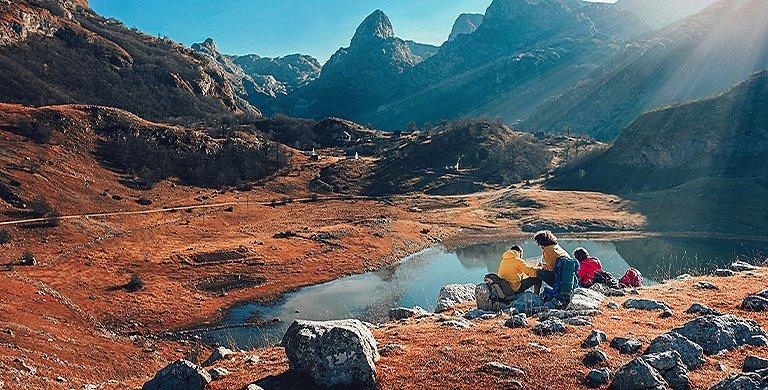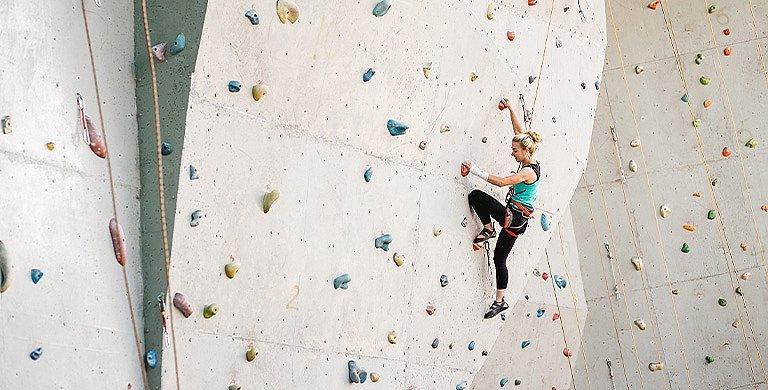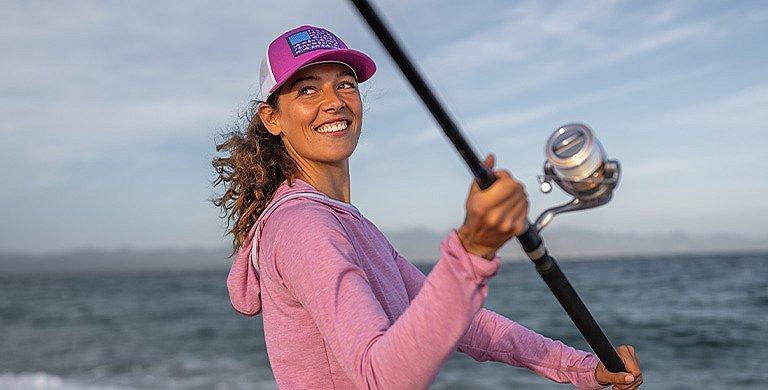OUTDOOR LIFE
Winter Outdoor Myths: A Guide to Cold Weather Fact and Fiction
Columbia Sportswear breaks down some well-known cold weather myths, and gives you the facts to keep you warm, comfortable and safe this winter.
BY: NANCY BOUCHARD
We’ve all heard cautionary tales about staying safe in cold weather. Since we love winter activities—from skiing and snowboarding to ice skating and curling—we’ve investigated some of these tales. Here’s a rundown of the top winter outdoor myths—we’ve done all the worrying so you can focus on having fun!
Myth: You lose most of your body heat through your head.
Fact Check: The old wives' tale that 90% of body heat is lost through the head is false. Heat loss is proportional to the surface area of any uncovered body part. Your head accounts for about 10% of body heat loss, similar to other exposed areas. While wearing a hat—like a wool or synthetic
beanie—helps on cold days, it’s not more important than your jacket, pants, socks, or gloves. And don’t forget a neck gaiter; frostbite on your nose and ears is no myth!
Myth: Touching your tongue to a frozen pole won’t hurt.
Fact Check: Curious if your tongue would stick to a frozen metal pole or icicle? It's a classic chairlift and après-ski dare that can lead to some regrettable choices. When your wet tongue touches a cold surface, heat quickly drains away, freezing the moisture and creating a strong bond. This is a textbook case of heat transfer in extreme cold, and trying to unstick your tongue can be painful and even damaging. But if it happens, don’t panic! Stay calm and grab some warm liquid to melt that icy connection.
Myth: Drinking alcohol helps keep you warm.
Fact Check: While a shot of liquid lightning might spark some fire in your belly, that warm sensation isn’t true warmth. Alcohol temporarily dilates blood vessels near the skin, giving a fleeting feeling of warmth, but it actually increases heat loss and lowers your core body temperature. Plus, it impairs judgment, which can be risky in cold conditions—especially if you’re pushing your limits on skis or a snowmobile. Pro tip: Save the spirits for après-ski celebrations!
Myth: The sun’s rays are weaker in winter, so there’s less likelihood of getting a sunburn.
Fact Check: Even in winter, UV levels can still cause sunburn, despite the earth tilting away from the sun. Clouds block up to 50% of UV rays, but snow and ice reflect them, while the clear, dry air at higher altitudes amplifies UV exposure—rising by about 6% for every 1,000 feet. At higher elevations, you can get up to twice the usual UV exposure, which can damage both skin and eyes, increasing the risk of melanoma. Cold temperatures can make the sun’s effects easy to ignore, but the risk is real. So, always wear sunscreen, UV lip balm, and sunglasses or goggles, and pack a hat for extra face protection when you take a break.
Myth: Eating snow will keep you hydrated.
Fact Check: Snow isn’t liquid, so your body must expend energy to melt it into usable water, which can lead to dehydration. To stay safely hydrated in the cold, melt the snow first before drinking. Also, watch out for giardia from contaminated snow—while licking a snowball or catching snowflakes on your tongue is fine, if you’re planning to melt snow for water, give it a good boil first!
Myth: Rubbing frostbitten skin helps warm it up.
Fact Check: Rubbing frostbitten skin can make things worse as it can cause tissue and even nerve damage. The best way to rewarm frost-nipped or bitten areas is with warm (not hot) water or by using your warm hands. The old wives' tale about putting cold hands or feet—someone else’s unless you are a contortionist--under armpits to warm them up is good advice. Your armpits are warm areas of the body and using them to warm extremities can help improve circulation and transfer heat effectively. Just remember to ensure that your own body is warm enough to help with the process! When braving extreme cold, pack plenty of layers along with some hand and toe warmers. You can stash them in your gloves, a chest pocket or inside your ski helmet. They’re great for warming up your ears and nose—just remember not to put them in direct contact with your skin.
Myth: You need to wear extra layers to stay warm.
Fact Check: Remember when you were a kid and thought wearing two pairs of socks would keep your feet twice as warm? Spoiler alert: it often has the opposite effect! Overdressing can lead to sweating, which cools your body as it evaporates. Plus, your body can’t efficiently heat multiple layers, and too many layers can restrict mobility. If you aren’t moving, it’s more difficult to stay warm. The smart move? Dress in adjustable layers that regulate your temperature and wick away moisture. If you are working up a sweat, take off a layer. If you are stopping for lunch and sitting still, pile on that down jacket
.
Myth: Cold weather causes colds.
Fact Check: Colds are caused by viruses, not cold air. Winter sickness often spikes because we huddle indoors, where viruses spread easily. The silver lining? Being outside reduces your chances of catching a cold. But beware: cable cars and gondolas can turn into viral Petri dishes—often dubbed “cabin cough.” If you're crammed in with others, keep your gloves on, pull up your neck gaiter over your nose, and crack a window. While neck gaiters aren’t as effective as masks, they’re a solid first line of defense. And yes, wet hair can freeze in freezing temps, but it won’t increase your chances of getting sick.
Myth: Loud noises trigger avalanches.
Fact Check: While this myth makes for a thrilling movie scene, the sound of a loud noise isn’t powerful enough to trigger an avalanche. The vast majority of avalanches involving people are caused by the person’s weight on the snowpack, not noise. Over 90% of avalanches involving people are triggered by the individuals themselves or a group above them.
Myth: It hasn’t snowed in a while, so there’s no avalanche danger.
Fact Check: Not true! Avalanches can happen days or even weeks after a snowfall. Risk often spikes during or right after big storms, but snowpack stability depends on many factors—like snow layer interactions, temperature, and slope angle.
Myth: Hot liquids will warm you more quickly than cold drinks.
Fact Check: Hydration in the winter is critical for maximizing internal heat production and performance. There’s nothing wrong with hot liquids, and there’s little doubt that they are comforting, but it’s harder to drink enough of the hot stuff to keep your body’s core temperature up. It’s a lot more efficient to drink cool water. People often overlook hydration in cold weather, but your body still loses moisture through breathing and sweating, especially during physical activity. Whether you are skiing or winter hiking, bring along a
water bottle and drink water to stay hydrated, even if you don’t feel as thirsty as you might on a hot summer day.
Myth: Hypothermia kills you within minutes of falling into icy water.
Fact Check: Not quite! Those who perish quickly typically drown due to panic and inhaling water, not hypothermia. It takes about 30 minutes for your body’s core temperature to drop dangerously low, and another hour for your body to shut down, even in ice-cold water. If you find yourself in a creek or lake, take the first few minutes to control your breathing and get oriented. Then put together a plan of action to get out or rescued. If escape isn’t possible, your best bet is to relax as much as possible, concentrate on slow, regular breathing and float. If you are ice fishing or skiing in areas with lakes, ponds and rivers, always familiarize yourself with best practices on how to stay safe on ice.
Myth: Putting someone with hypothermia into a hot tub is a good idea.
Fact Check: False. The most important thing to do when someone is hypothermic is to warm them using blankets, hot water bottles, and even your own body heat. It’s also essential to get the person to a safe, warm environment, provide dry clothing, and ensure they are hydrated. However, placing someone who is very cold into a hot bath can cause pain and skin damage. Immersion in a jacuzzi or hot tub could lead to an irregular heartbeat and potentially a heart attack for someone with hypothermia.
Myth: Bears hibernate in the winter, so you don’t need bear spray.
Fact Check: While it’s true that most of our bruin friends are enjoying a long winter’s nap, bears don’t always sleep all winter. They go into a state called torpor but can be roused by changes in the weather, or disturbances from humans. If you are hiking or skiing in bear country, bring bear spray.
Myth: Man-made snow isn’t as good as natural snow.
Fact Check: All snow is essentially frozen water, regardless of how it forms. The key difference is that natural snow falls a longer distance from the clouds, allowing the crystals to develop by interacting with fine air particles. In contrast, artificially produced snow from snow cannons shoots out a mist of water, resulting in a different consistency that can range from fine, dense snow to actual powder. Colder temperatures and lower humidity during production lead to stronger crystals, creating some excellent powder for skiing!
Myth: Lightning doesn’t strike twice in the same place.
Fact Check: Lightning can definitely strike twice in the same place, especially if it is a highpoint, like a mountain top. And, while lightning is more prevalent in July and August, it is also something to be aware of in winter months. Although thunderstorms are less common in the winter, snowstorms can also create lightning. This “thundersnow,” is a result of strong instability and abundant moisture.
Myth: Does salt melt snow?
Fact Check: This one is slightly complicated. Yes, salt melts snow because it lowers the freezing point of the water in the snow. But for alpine ski racing, when there is a lot of powder, salt is scattered on the course to let the snow melt and then refreeze into ice. Ice can act as a “snow hardener” as it can allow it to refreeze into a dense, hard layer when temperatures drop. That way you get a consistently hard surface for competitors.
Your best defense against cold weather is good apparel and footwear. For your next winter adventure, layer up with Columbia Sportswear’s ski clothes, winter boots and accessories.



